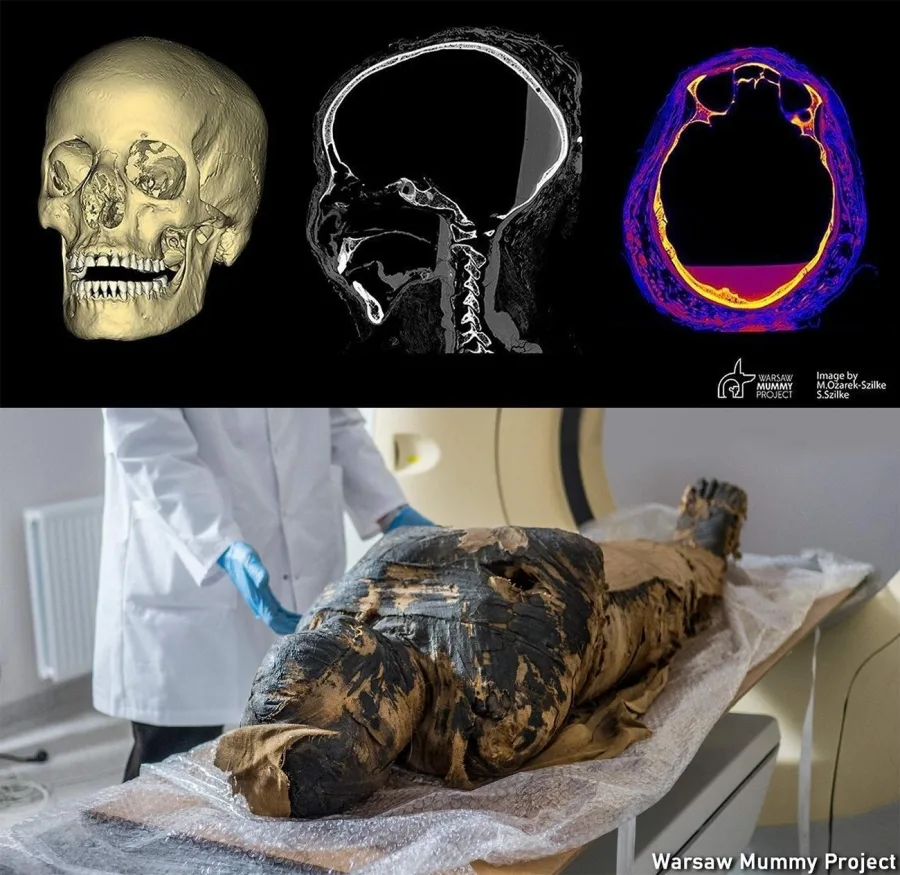The enigmatic "Mysterious Lady," a mummy dating back to the first century B.C., has captivated researchers and history enthusiasts alike. Discovered in Luxor, Egypt (ancient Thebes), and brought to the University of Warsaw in Poland in 1826, this mummy remained unexamined for over a century — until recent studies reignited global curiosity.
A Surprising Revelation
In 2021, experts from the Warsaw Mummy Project made a groundbreaking discovery. Initially believed to be a male priest due to inscriptions on the sarcophagus, advanced imaging techniques revealed that the remains actually belonged to a young woman in her twenties. Even more astonishing was the claim that she was 6.5 to 7.5 months pregnant at the time of her death.
Using X-ray imaging and CT scans, researchers identified several bundles of mummified organs in her abdomen. They proposed that among these, a poorly preserved fetus around 28 weeks into gestation could be seen. To explain the absence of visible fetal bones, they suggested that over time, the mother’s uterus became oxygen-deprived and acidic, causing the fetal remains to deteriorate and effectively "disappear." The same team also believed they had found signs of nasopharyngeal cancer in the mummy's skull, potentially contributing to her death.
Sparking Debate
These findings sparked controversy in the scientific community. Were the observations truly evidence of pregnancy and cancer, or were they misinterpretations of the mummification process? To settle the debate, a team of 14 researchers, led by archaeologist Kamila Braulińska from the University of Warsaw, revisited the case. Their findings, published in Archaeological and Anthropological Sciences last month, aimed to bring clarity.
Uncovering the Truth
After a thorough re-analysis of the CT scans, every expert involved reached the same conclusion: there was no fetus. What had been previously interpreted as fetal remains was, in fact, embalming material used during the mummification process.
Furthermore, the team found no conclusive evidence of cancer in the mummy's skull. Some researchers suggested that the damage previously attributed to cancer likely occurred when the woman’s brain was removed during the embalming procedure — a common practice in ancient Egyptian mummification.
Resolving the Mystery
With these new findings, the international team of experts believes they have put the long-standing debate to rest. The once-sensational claims of the first documented case of pregnancy in an ancient Egyptian mummy and evidence of nasopharyngeal cancer have now been debunked.
The "Mysterious Lady" continues to intrigue, but her true story is gradually coming to light. Each discovery brings us closer to understanding the lives and burial practices of ancient Egyptians, unraveling mysteries that have endured for millennia.








